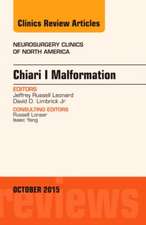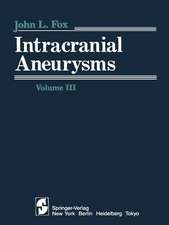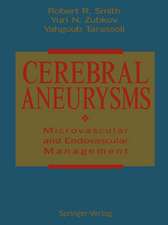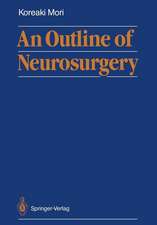Recenzii
“This is an update of a book written by neurosurgeons who were trained by Professor Madjid Samii that follows the traditional principles of their mentor's philosophy in the diagnosis and management of various neurosurgical pathologies and presents the authors' own personal experiences. … The audience includes trainees and established practitioners in neurosurgery. It also will be helpful for ENT surgeons, neuroradiologists, and neurologists.” (Ramsis Farid Ghaly, Doody's Book Reviews, May, 2015)
“This is a comprehensive text well written with several photomicrographs, line drawings, and illustrations documenting the current approaches in neurosurgery. … This is an outstanding book for residents, fellows, and young neurosurgeons. More senior neurosurgeons will find up to date and current thinking with respective to the various pathologies.” (Joseph J. Grenier, Amazon.com, August, 2014)
Notă biografică
Marcos S. Tatagiba, MD, PhD, studied medicine at the University of the State of Rio de Janeiro, Brazil, before undertaking neurosurgical training from 1987 to 1993 in the Department of Neurosurgery, Nordstadt Hospital, Hannover, Germany, under the chairmanship of Prof. Madjid Samii. He presented his doctoral and post-doctoral theses at Hannover Medical School in 1992 and 1998. Since 2000 he has been Vice Director of the International Neuroscience Institute, Hannover; Vice Director of the Department of Neurosurgery, University of Freiburg; Director and Chairman of the Department of Neurosurgery, University of Tübingen; and Chairman and Director, Department of Neurosurgery, University of Zurich. Professor Tatagiba is the author of 237 articles in peer-reviewed journals and the recipient of several prizes, including the Neurosurgical Research Foundation Prize from the German Society of Neurosurgery (2002) and the Innovationspreis Medizintechnik – BMBF (2007). Professor Tatagiba served as President of the German Academy of Neurosurgery in 2010-11 and is President-elect of the German Society of the Skull Base. Paulo Henrique Pires de Aguiar, MD, PhD, graduated from the São Paulo Medical School, Brazil, in 1987 and then undertook a residency in neurosurgery at Hospital das Clinicas of São Paulo Medical School and a Clinical Fellowship in skull base surgery at Nordstadt Hospital, Hannover, Germany. In 1994 he was appointed Assistant Professor of the Division of Neurosurgery at Hospital das Clinicas, São Paulo. He was awarded a PhD in Neuropathology at São Paulo Medical School in 1998. He became Post-graduation Professor in the Department of Neurology at São Paulo Medical School in 2003 and Professor of Neurosurgery in June 2006. He is also Post-graduation Professor in the Department of Surgery at Federal University of Rio Grande do Sul, Brazil. Professor Aguiar has published 105 chapters in Portuguese, English, and Spanish on the topics of skull base surgery,neuro-oncology, and vascular neurosurgery and edited eight books on neurosurgery. Ricardo Ramina, MD, PhD, studied medicine at the Pontifical Catholic University in Curitiba, Brazil, before completing residencies in neurosurgery in Curitiba, Frankfurt, and Hannover. In 1986 he was appointed Chairman of the Neurosurgical Department at Nações Hospital in Curitiba, Brazil and since 2004 he has been Chairman of the Neurosurgical Department of the Neurological Institute of Curitiba [WFNS (World Federation of Neurosurgical Societies) Post-Graduate Training Center]. Since 2006 he has been Professor of the Postgraduate Course in Surgery at the Pontifical Catholic University of Curitiba, having previously been an Associated Professor of Neurosurgery at George Washington University, Washington and State University of Campinas, São Paulo, Brazil. He has published more than 160 papers in peer-reviewed journals and has given more than 600 lectures and presentations on various topics in neurosurgery as an invited guest or guest of honor at national and international congresses.
Textul de pe ultima copertă
This second edition of Samii's Essentials in Neurosurgery contains revised and updated versions of chapters from the first edition plus contributions on new topics written by leading neurosurgeons who were trained by Professor Madjid Samii in Hannover, Germany. Almost all fields of neurosurgery are covered. The authors follow the traditional principles of Samii’s philosophy in the diagnosis and management of various neurosurgical pathologies, while presenting their own personal experiences. The extensively illustrated texts document clearly how cutting-edge technology in neurosurgery is being applied in new approaches and techniques. This book will greatly assist neurosurgeons, ENT surgeons, neuroradiologists, neurologists, and neurophysiotherapists in their everyday practice.






















